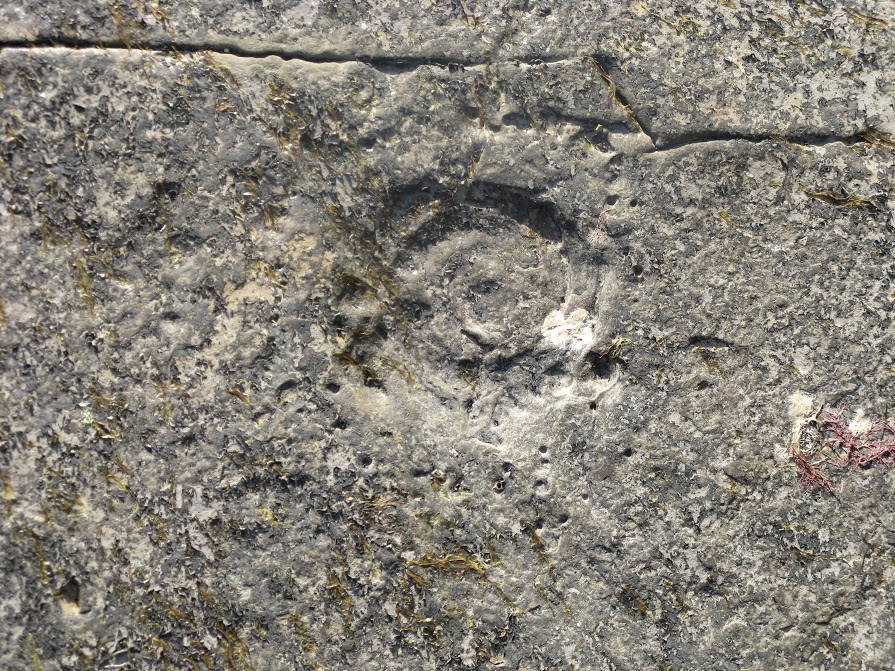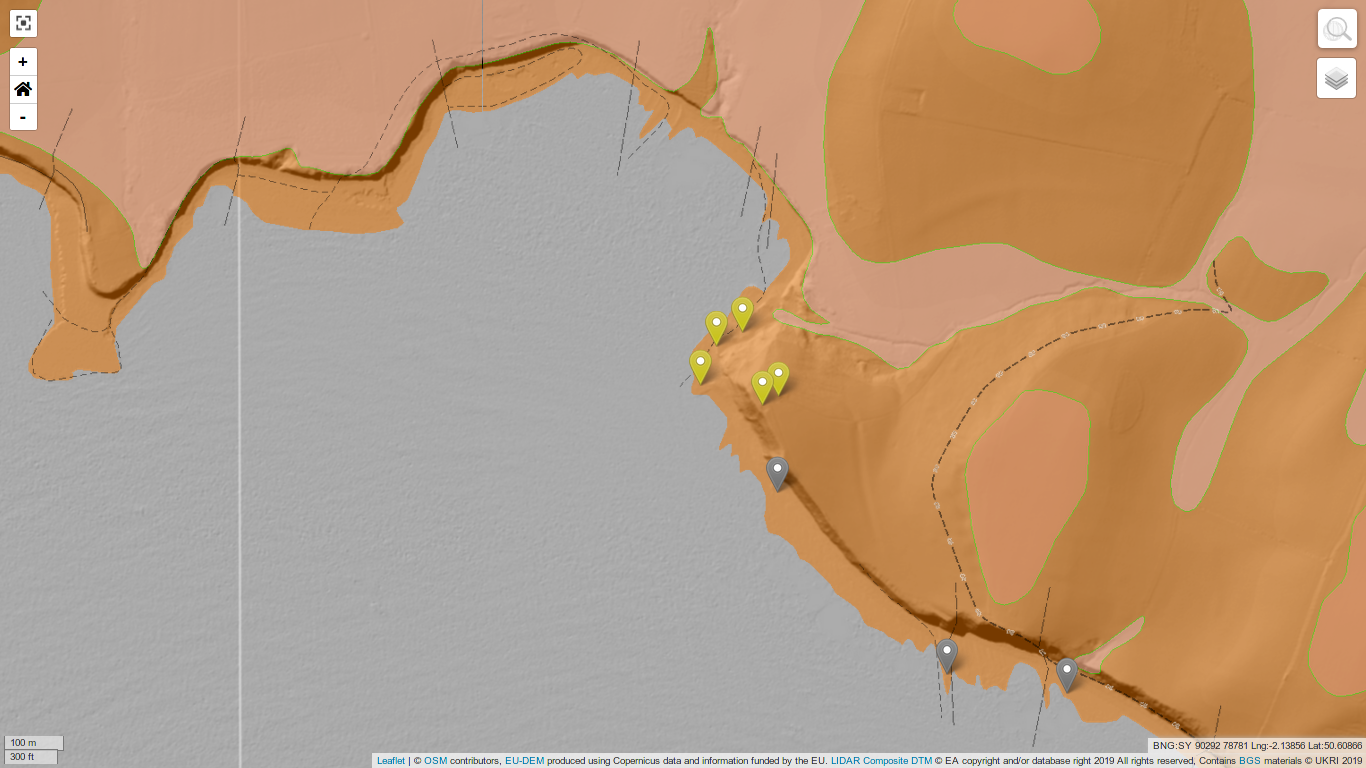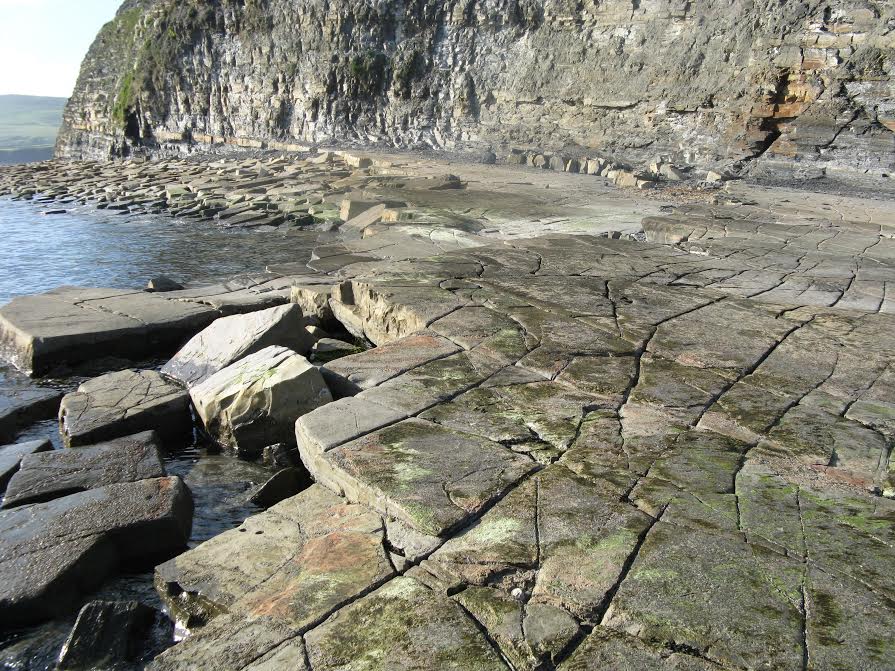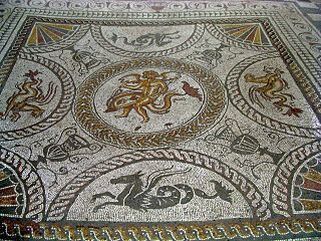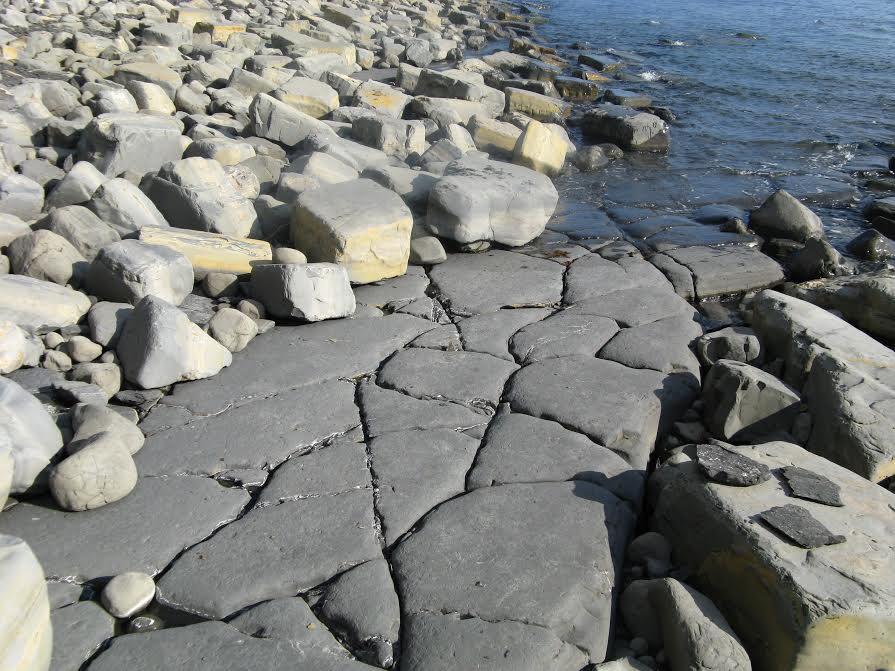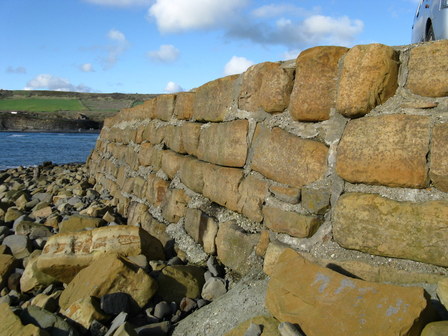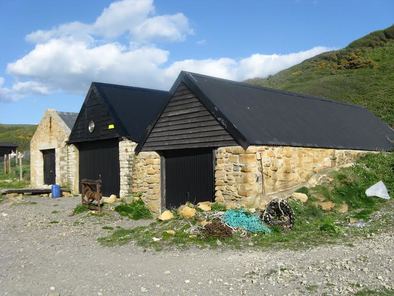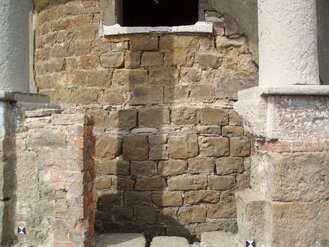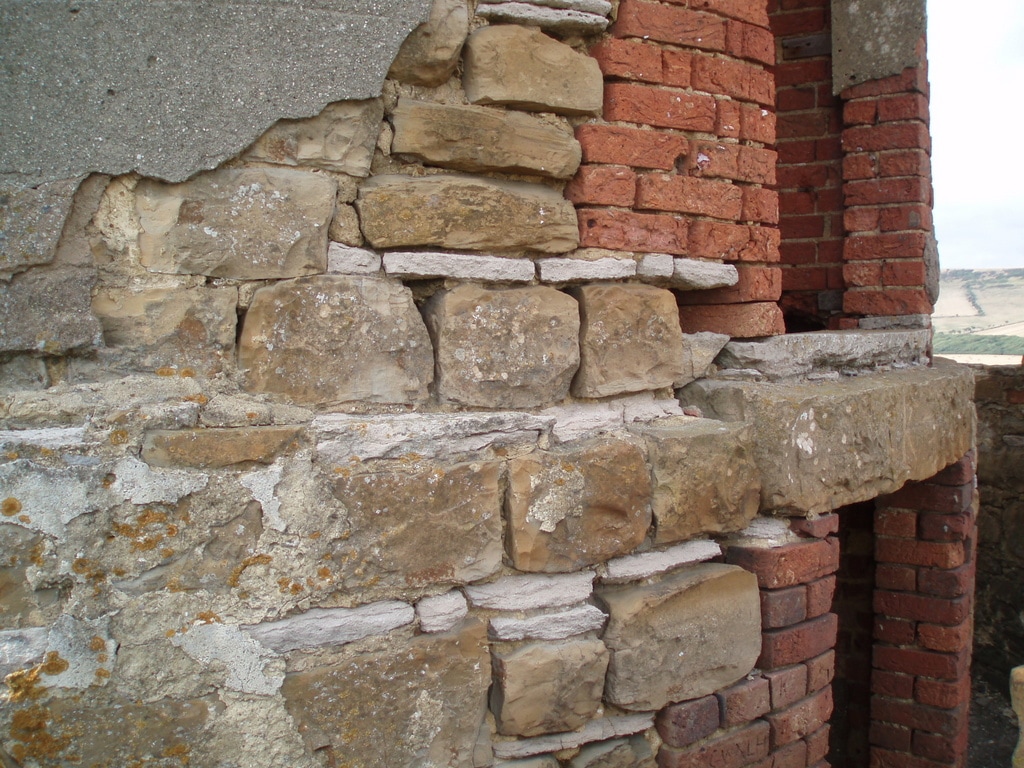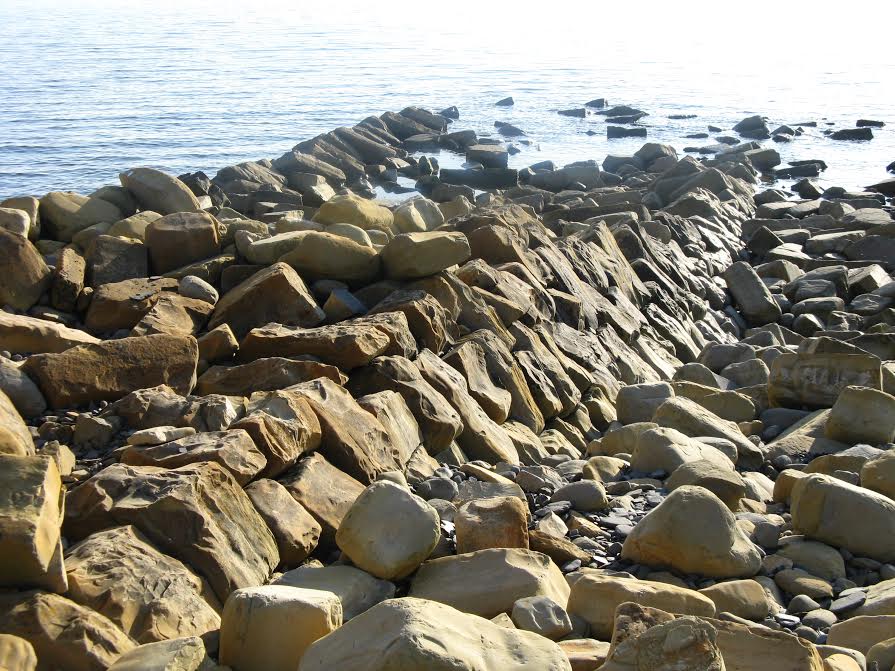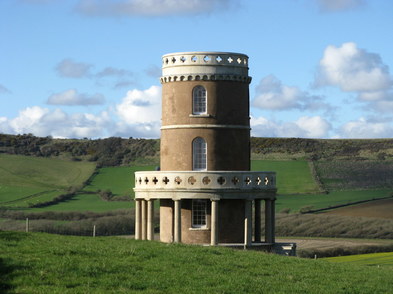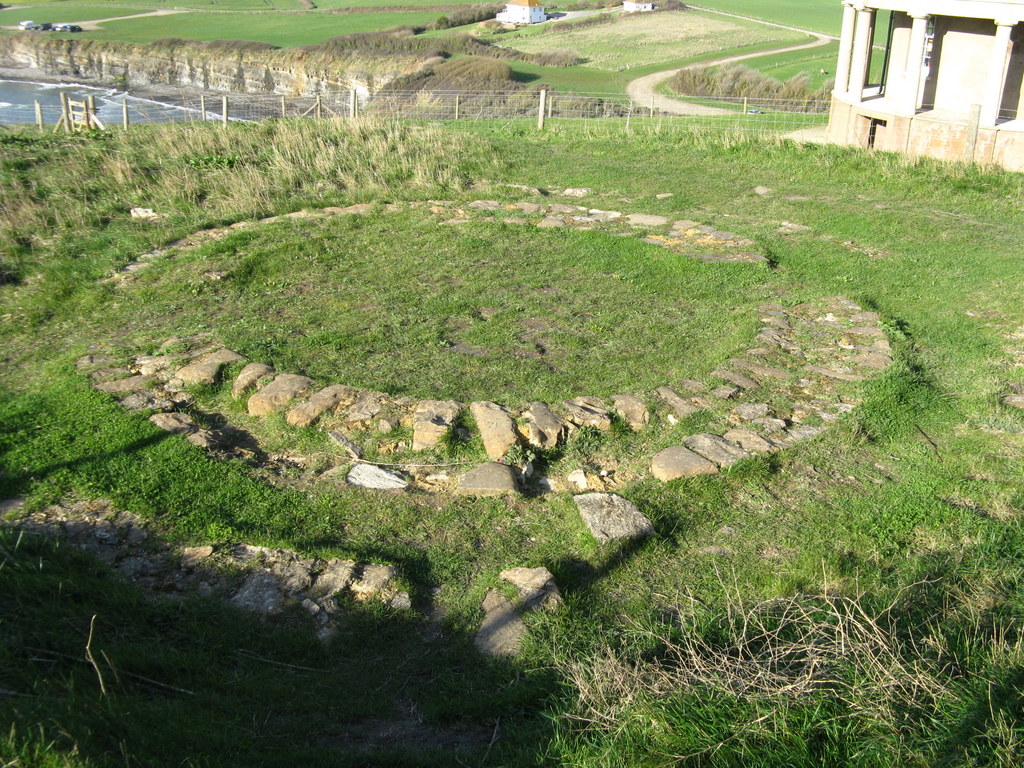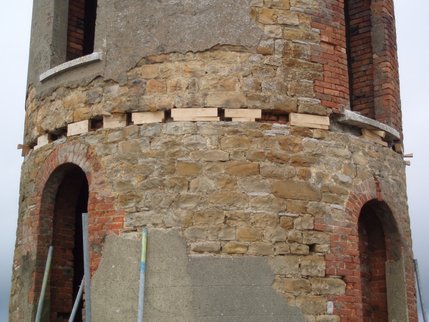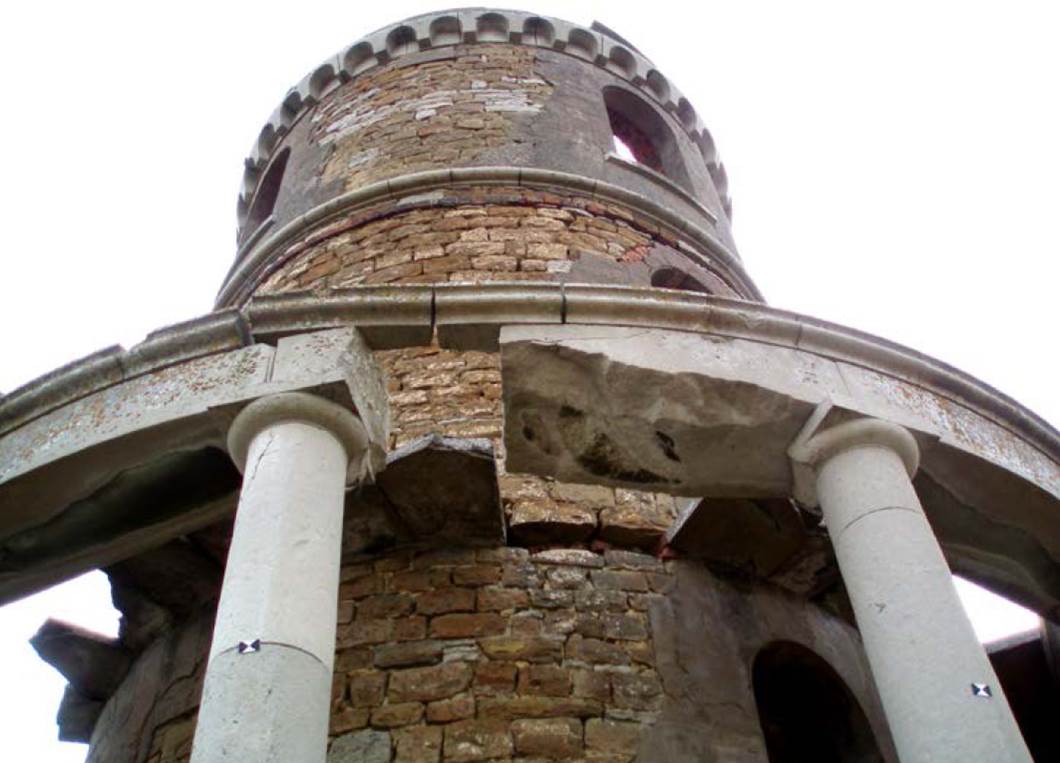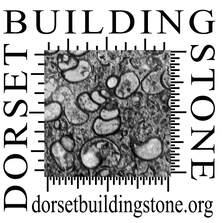Kimmeridge Bay Dolomitic Limestone (Lead author: GR)
Kimmeridge Yellow Ledge Band Dolomitic Limestone: Buildings
|
Old Pier: To the south-east of Kimmeridge Bay is the remains of a pier built from Yellow Ledge Dolomitic Limestone blocks by the oil shale company Wanostroct and Co in 1860. The company lit the streets of Wareham with gas from the Kimmeridge oil shale. Backed by the French Ambassador to London, they secured the contract to light the streets of Paris and built a small port at Kimmeridge. Sea wall: Close to the site of the Old Pier, Yellow Ledge Dolomitic limestone has been used for the sea wall protecting the car park close to the Fine Foundation Marine Centre. It is the only large building constructed of Yellow Ledge dolomitic limestone, possibly from the beach but, more likely, from a small cliff quarry immediately to the west. It also contains some brick and pillars of Portland Stone. The dolomite is very yellow and it is likely that blocks that were already weathered were used for construction. Because of the threat from coastal erosion and the tower's progressive collapse, from 2006-2008 it was taken apart and rebuilt by the Landmark Trust about 25 metres inland from the cliff. Clavell Tower, before being dismantled, moved and rebuilt. Yellow Ledge Stone Band rubble blocks are exposed under the damaged render. The colonnade is of 'unusual' Portland Stone which may have been sourced from the local quarry on Smedmore Hill. Ⓒ Gordon Pipe 2006
|
Clavell Tower: This folly and lookout was built in 1831 by the Rev. John Richards who assumed the name Clavell when he inherited the Smedmore Estate. It has historic connections with Thomas Hardy and was the inspiration for P. D. James' novel, The Black Tower. Fisherman’s' boat houses (see image left), built from Yellow Ledge Stone Band (YLSB) ferroan dolomitic limestone rubble blocks. Located close to the Fine Foundation Marine Centre on the east side of Kimmeridge Bay. Ⓒ Geoffrey Rowland
Photos taken by Gordon Pipe during the rebuilding, as part of his study. Due acknowledgement is made here to Gordon's report :Pipe, Gordon, 2007: The Clavell Tower Story [A report on the history, dismantling and re-erection of Clavell Tower at Kimmeridge, Dorset], Project for Bournemouth University.
|
- From the east side of Kimmeridge Bay it is possible to walk eastward by the cliff top, past Clavell Tower, but there is no route down to the beach.
- At beach level it is possible to proceed east but only providing the tide is low and conditions are favourable. It is easy to be cut off on the beach here and only if the tide and weather conditions are safe should one proceed along the beach.
- The danger of falling rock is great and cannot be over-emphasised. Safety helmets are useful, especially for parties, and much care should be taken to keep out as far from the cliffs as possible.

